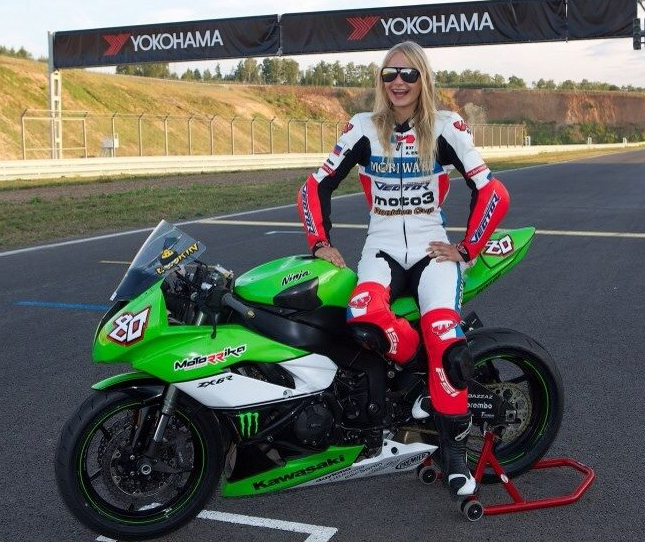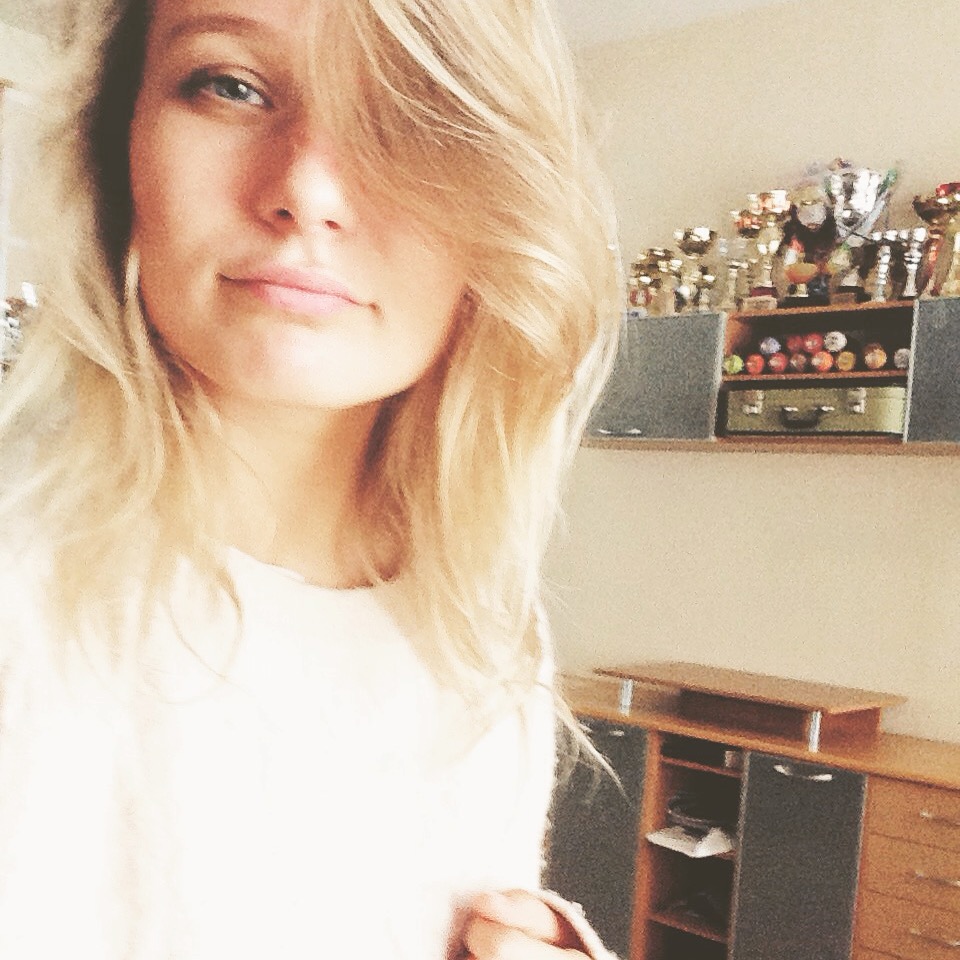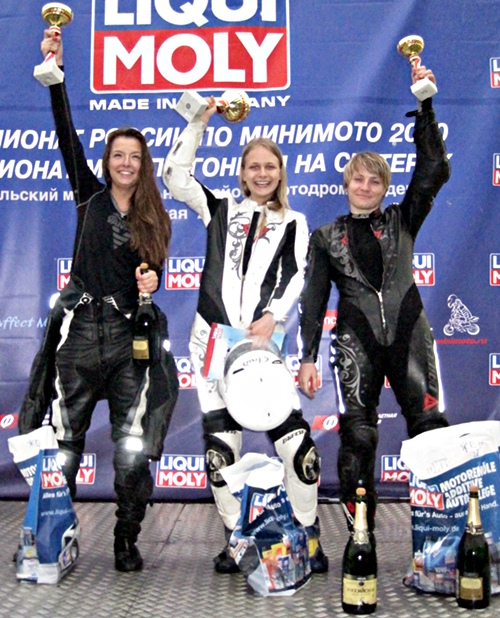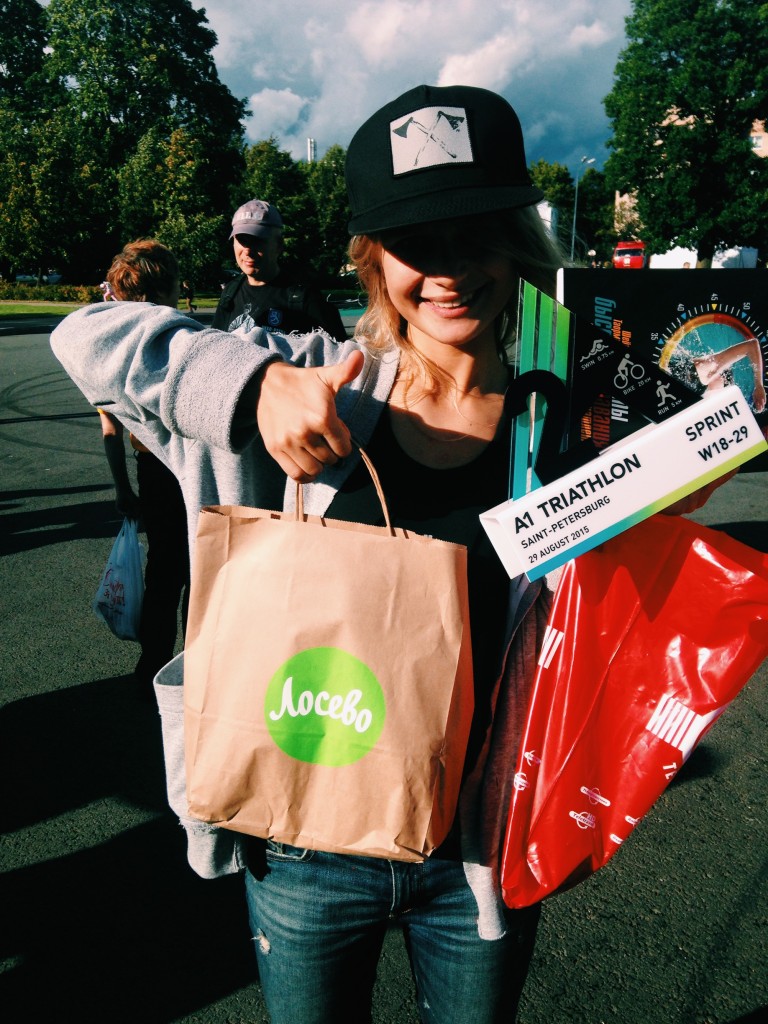When Beauty Meets Speed: Nika Kletski, Russia’s First Female Motoracer
1,108 views / 4 Dec 2015
Very rarely when the stars align, there comes a person, who’s got it all – the looks, the brain, the muscle and the grit. Nika Kletski, Russia’s first and most successful female motoracer, is without a doubt one of these special people. Russian Accent had an opportunity to sit down with Nika Kletski and talk about her outstanding career in motorsport and a passion for art.
By Afanasiy Pervomaisky
How did you get involved in motorcycle racing?
To be honest, being a person who hadn’t really liked extreme sports in the past, I faced situations in which I had to show courage and do my absolute best. Back then I was dating a man who was a Formula-3 pilot racing in competitions across Europe. He was so passionate about racing that one day in 2008, he suggested that I should take part in a try-out for a women’s motorcycle team. I agreed even though I had never done motorcycle racing in my life and had no idea what I was committing to.
There were 40 girls in a try-out race and each of them competed hoping to claim two spots in the team. It was so hard, but I rose to the occasion and ended up as the strongest racer out of all the participants, which surprised everyone. Turned out I was a good, natural racer and could compete on an equal footing not only with women, but with men as well.
What is it to be a girl in motorsport?
Only two girls passed the try-outs. We were so excited that we’d be going to the Russian championship the following year. However, the closer the championship came, the more pressure we had to go through. A woman’s nature gave in (laughs) and the second girl quit. I was now the only girl in our team. And I raced as a lone female competitor. All mechanics and engineers in our team helped me.
Throughout 2009, our team was expanding; however, only men joined in, leaving me as the only girl in our team. I didn’t receive a special treatment and did everything like men did. But sometimes I couldn’t handle it and emotions got the better of me, but in those occasions my tears melted the hearts of men (laughs). And they changed their attitude towards me.
I think motorcycle racing is 100-percent not a women’s sport. Challenges that moto-racing demands from pilots require a huge commitment and constant overcoming of fear. I wouldn’t say that girls in Russia are interested in motorcycle racing less or more than in the United States for example. Motorcycle racing has very few women in general, but they’re all elite. These women however are racers of an international level.
What can you say about motorcycle racing in Russia?
Russia has good tracks: in Moscow, Kazan and Nizhniy Novgorod. The climate allows moto-racers to train only in during summers. But nowadays one isn’t attached to a certain city or even a country, you can always go to, for example, Spain. There you can train year-round.
Moto-racing isn’t a popular sport in Russia. Championships aren’t broadcast on national TV channels. But people generally like motor-racing. Everyone’s probably rode “Jawa” [a popular motorcycle brand popular in the Soviet Union and its ally-countries] in their youth. That’s why motorcycles in Russia are more commonly associated with past memories than risks.
I heard you no longer compete in motorcycle racing professionally. What was behind that decision?
I achieved all the goals I had set for myself by that moment. Over 4 years our team performed at a highest level, always finishing on the podium. That’s why I decided to call it quits and enter into a new chapter in my life.
Obviously, for me sport is the way of life and the frame of mind, ingrained in my heart and flowing through my veins, and that’s why I can’t imagine myself without it. For that reason, I keep training and competing in different sports.
This august I participated in a triathlon and finished second. For me that was the serious test of willpower and strength. I had to do swimming, cycling and running – all three sporting events with no breaks in between. And the water was so cold that the whole time I kept thinking to myself: “When will I be done with this?” Before the triathlon, the last time I swam was in a swimming pool a year before. One day prior to the start of the triathlon, I borrowed a bicycle from a friend, so I could remember how to ride it. That was all my preparation for the triathlon, except of course a regular running routine. I had to harness all of my willpower, experience in sports and determination to finish on the podium.
What else do you do besides extreme sports?
For me the visual perception of the world has always been more dominant and I’ve gotten used to express my feelings using a pencil and a piece of paper. I can’t say that drawing was my objective. But right now drawing for me is an opportunity to express my feelings and tell things that I can’t describe with words.
When doing extreme sports, you experience the most vivid and strong emotions, and that sharpens your perception of the world. It was sport and not teachers, which made me an artist and helped to develop my character. That’s why for me painting and extreme sports aren’t the opposites, but on the contrary – they complement each other.
Furthermore, I’m probably one of those people who’re always looking for a purpose and ideas in life, following my own perception of the world and values. I paint things that I understand and can feel myself. That’s why honesty is one of the main criteria in my work. My recent work shows my perception of the contemporary ideals of beauty and a relationship between the man and the woman. There is a painting which I drew feeling distressed in the immediate aftermath of the Russian plane crash in Egypt.
POST A COMMENT
Your email address will not be published. Required fields are marked *




comments (0)
Write a comment share your opinions with others.